Caviar. We’ve all heard about it, seen it on TV. But only some of us have ever tasted it. It is, after all, one of the most expensive foods in the entire world. But thanks to human ingenuity, it’s not as expensive as it once was. With the advances in aquaculture, caviar from farmed sturgeon is now available. There are different kinds of caviar, depending on the species of the sturgeon, where it was harvested, and how the eggs were treated after harvest. This creates differences in appearance, flavor, and texture.
And if you check your local grocery store or Amazon, cured eggs from other types of fish such as salmon or American spoonbill are now also called caviar (though the label does tell you which kind of fish the eggs came from). If you’re a first-time buyer AND taster of this luxurious treat, it can be quite intimidating just trying to choose which one to buy. And despite the drop in prices, these eggs still don’t come cheap.
To help you out, we’ve found the best types of caviar (read that: most pleasing to the palate for a majority of people) and a lot of them don’t even require you to break the bank.
Top 8 Types Of Caviar Of 2020 Reviewed
1. Bemka Paddlefish Wild Caviar
If you’re partial to the taste of Caspian Sevruga caviar, Paddlefish Caviar is your best alternative. This caviar from Bemka has the same buttery taste of Sevruga Caviar as well as its intense flavor. It is richer and saltier than some of our other picks but some people do prefer that. Taste is subjective, after all. However, the texture isn’t as consistent as its taste. Some are mushy or too soft. The lack of firmness may dissuade more seasoned palates.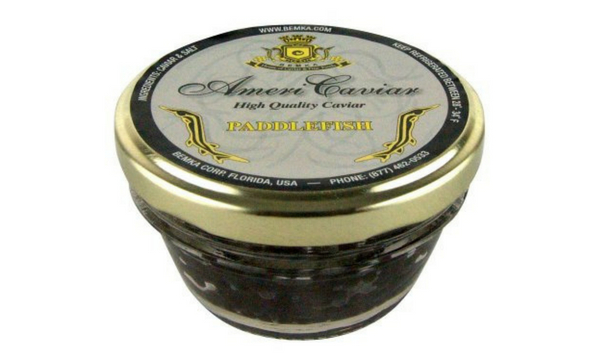
Pros:
- Rich, intense flavor
- Good price
Cons:
- The texture isn’t consistent; too soft
2. Black Diamond Hackleback Caviar
Sourced from the Mississippi River, this caviar has a jet-black color, a firm texture that gives you the ‘pop’, and smooth, buttery taste. Its subtleness in flavor is one of the reasons why this could be a good choice for first-timers. The caviar is beautifully packaged which would make it a great gift. However, it is slightly more expensive compared to other Hackleback Caviar available online. 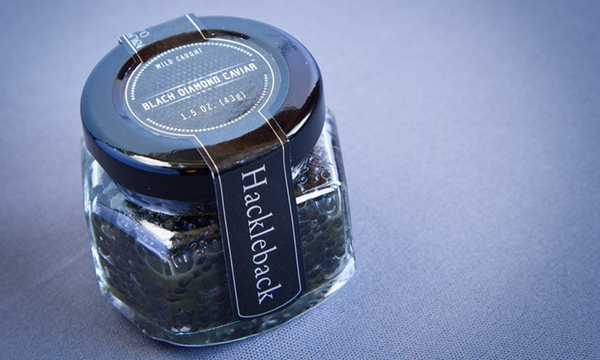
Pros:
- Firm texture
- Smooth, buttery taste
- Beautiful package
Cons:
- More expensive than other hackleback caviar online
3. Olma Beluga Sturgeon Hybrid Caviar
While pure Beluga caviar isn’t legal, that doesn’t mean you need to do without its incredibly smooth, buttery flavor. This hybrid caviar is the sustainable alternative, sourced from the hybrid breeding of Beluga and Siberian fish. However, it is very expensive and not everyone likes the taste. The roe is pasteurized which may affect the texture and taste.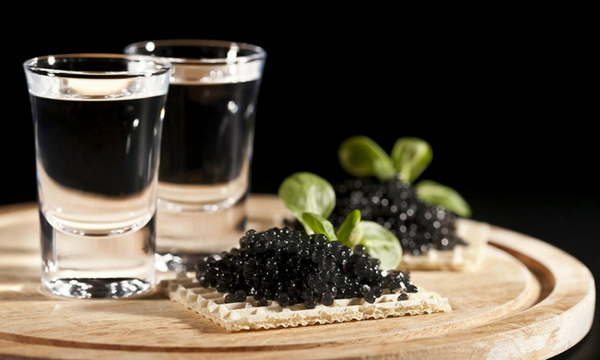
Pros:
- Long shelf life
- Beluga hybrid caviar
- Smooth, buttery taste
Cons:
- Expensive
- Pasteurized which may affect texture and taste
4. Bemka Hackleback Wild Caviar
Bemka Corporation has been supplying internationally farmed caviar and distributing domestic wild caviar since 1984. Its Wild Hackleback Caviar is sourced from the Missouri and Mississippi River. It is subtly salted with a buttery flavor that really pairs well with a little crème Fraiche on blini or crackers.
It is a good alternative to Caspian Ossetra. However, some have received less than firm roe which didn’t deliver the right “pop.” But you can’t really expect each tin or jar to have the same quality, flavor, and texture each time as there are several factors that can affect the caviar’s characteristic. The good news is that if you order online, this is delivered to you with ice packs the next day. 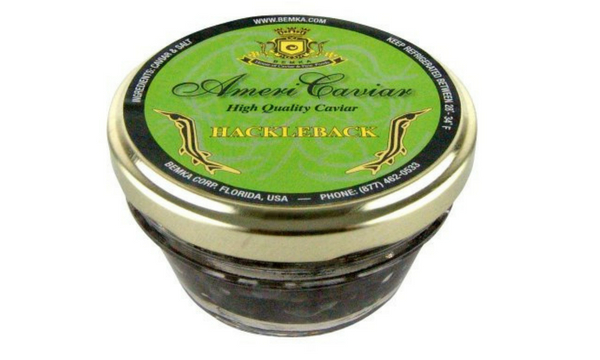
Pros:
- Creamy, buttery flavor
- The less expensive alternative to Caspian Ossetra
- Established brand
Cons:
- Not all have the same quality; some may lack the “pop” of high-grade roe
5. Sasanian Osetra Caviar
This is true caviar, sourced from sturgeon roe that was farmed in ice-cold clean spring waters in Poland. The eggs are medium-sized with a dark grey color. This freshly packed caviar tastes smooth and buttery. The product is shipped in a thermo-secure box with ice packs to ensure freshness.
However, the quality isn’t consistent. Some buyers do receive mushy eggs. And the label does not provide you with any information on which species of sturgeon the roe comes from though we can guess. But for the most part, the price, grade, and flavor are all on point.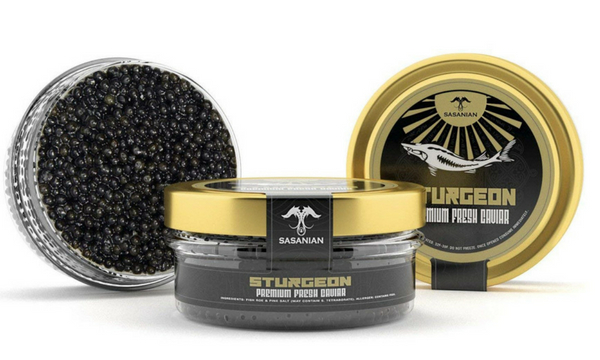
Pros:
- Sturgeon caviar
- Smooth and buttery flavor
- Good price
Cons:
- Some have received mushy eggs
- No information on species of sturgeon
6. Marky’s Hackleback Caviar
This is another Hackleback Caviar made by a different but very reputable company. It has its own breeding farm, Sturgeon Aquafarms, which was founded in 2005 but the company itself has been in business since 1983. This caviar has that smooth, buttery flavor and an intense nutty taste. The roe is a high-quality grade, medium-sized, and gray in color. While some may feel that it has an aftertaste, the flavor and quality are well worth the price.
Pros:
- Perfect flavor
- High-quality grade caviar
Cons:
- Some report an aftertaste
7. Bemka Russian Ossetra Crown Farmed Caviar
Sourced from farm-raised Russian Ossetra sturgeon, this caviar has large brown roe that gives you a delicious nutty flavor. The salt content is less than 3%. You can enjoy this caviar straight from the jar; no need for creme fraiche to mask any undesirable flavors. However, it is expensive, unlike other caviar alternatives.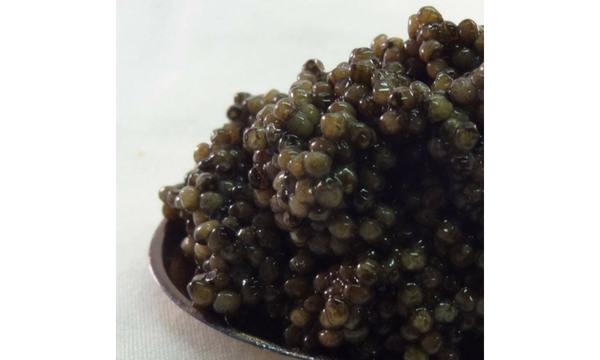
Pros:
- Russian Osetra Sturgeon caviar
- Delicious nutty flavor
- Less than 3% salt
Cons:
- Expensive
8. Marky’s Alaskan Salmon Roe Caviar
This isn’t true caviar but if you love the flavor of salmon, this Alaskan Salmon Caviar is a perfect choice. The large vivid orange beads are rich in Omega-3 fats and processed using the Malossol method which ensures that the caviar has a very low salt content. The eggs are firm and have the pop caviar lovers look for. However, some still found the caviar too salty. And some found the price a bit on the high side for salmon caviar.
Pros:
- Malossol method
- Firm texture
- Delicious salmon taste
Cons:
- A bit pricey
- Some still found it too salty
How To Choose the Best Caviar: the Ultimate Buying Guide
When it comes to luxurious foods, caviar is king. It’s a delicacy that is usually only served during holiday parties, really special events. While it isn’t as incredibly expensive as it used to be (it used to be reserved for Russian royalty, you know), but it can still put a little dent in your wallet. If you’re a first-time taster and/or buyer, looking for your very first caviar purchase is an intimidating and overwhelming task. Fortunately, there are a lot of experts ready to spread the love of caviar. We’ve combined all their tips in this one useful guide to help you get started.
What is Caviar, Exactly?
True caviar is the salt-cured fish eggs (called roe) of a sturgeon. It’s that simple and yet not. Because there are different kinds of caviar. It will depend on the species of sturgeon, where it was farmed, and how the eggs were salted. And then there are the caviar that came from other types of fish like salmon, trout, and paddlefish.
So, how do you distinguish between the true caviar and the other? Caviar that has been sourced from any other type of fish than sturgeon is required to have the name of the fish on the label. For example, ‘salmon caviar’ or ‘paddlefish caviar.’ If the label simply states ‘caviar,’ then it should only contain salted roes from a sturgeon.
How is Caviar Rated?
Caviar is rated based on the size of the roe, the color, the texture, and the method of processing. The designation of color is as follows:
- 0 for dark
- 00 for medium
- 000 for light
Caviar that is very light or golden in color, large in size is the rarest and called ‘Imperial’ or ‘Royal’ caviar because they were once reserved for royalty. However, with taste being so different and a new variety of caviar types available, the “best” is actually subjective. And the most expensive ones are not because they taste the best, but because they are the rarest.
Types of Caviar
There are several types of caviar bases on the processing method.
Malossol
This is the Russian word for ‘light salting.’ This method produces high-quality caviar that has been subtly salted with less than 5% salt. The salt is used to enhance the flavor and to preserve the caviar, keeping it fresh. Take note that the quality of the caviar will influence the amount of salt necessary. Only high-grade caviar will need as little as 5% salt; lower quality caviar will need more.
Salted
Also called ‘semi-preserved’ caviar, this type of caviar has up to 8% salt. Because this has more salt, this type tends to have a longer shelf life but the flavor may not be as good as malossol caviar.
Pressed
Too soft, damaged roes and immature or overly ripe ones are treated, highly salted, and then pressed to create a jam-like consistency that makes this ideal for spreading and cooking.
Pasteurized
The caviar is vacuum-packed into small glass jars then heat-treated to kill any microorganisms, semi-cooking the eggs. This prolongs the shelf life, allowing it to remain unopened in room temperature for a month. The Olma Beluga Sturgeon Hybrid Caviar is an example of a pasteurized roe.
Varieties of Caviar
The varieties of caviar are based on the fish which produced the eggs.
Beluga Caviar
This is the most expensive caviar in the world and illegal in the US due to the near extinction of Beluga sturgeon. The roe of Beluga sturgeons are large in size and their color can range from pale gray to black. Their taste is smooth and buttery.
Osetra Caviar
Unlike Beluga, these eggs are slightly smaller and its color ranges from very light to golden and dark brown. The taste is nuttier and a little fruity.
Sevruga Caviar
This has the smallest sized eggs and the color can range from light grey to black. It has a similar taste to Beluga with its buttery flavor. However,
it also tastes saltier and more intense. While this type is less expensive than the other two, it is also a crowd favorite due to its unique flavor.
American Caviar
Harvested from American lake sturgeon, this caviar has similar characteristics to Sevruga Caviar.
Paddlefish Caviar
This caviar is made up of roe with colors ranging from light to steel gray; some even have golden gray roes. The taste is similar to Beluga with its buttery flavor.
Hackleback Caviar
Firm, medium-sized, glossy black roe that taste sweet, buttery, and nutty. A good example of this is the Bemka Hackleback Wild Caviar.
Bowfin Caviar
This is another less expensive and legal alternative to Beluga due to its mild flavor. However, these firm, black eggs are smaller in size.
Salmon Caviar
Reddish orange eggs that are often used by sushi chefs. This has a distinct salmon flavor.
There are plenty of other varieties available in the market but it would be hard to list them all. Most connoisseurs would recommend first-timers to start with the Louisiana bowfin and explore from there.
Buying Tips
- Paying more does not mean better caviar. As we’ve mentioned, price does not equal taste.
- Work your way up. Instead of a higher grade of caviar, try one of the low-grade stuff first and gradually proceed to higher grade caviar. You need to train your palate in discerning the complexity of flavors that can be found in caviar. If you go for the high end right off the bat, there’s a good chance you’ll miss a lot of the delicate flavors which would be a complete waste of money.
- Try before you buy. This applies to any food, from baby cereals to the more expensive food items. It is a general rule for making an initial purchase. But it’s even more important with caviar because you’re going to be dropping a large wad of cash on such a small amount of product.
- Look for caviar in clear glass jars, just like the storage containers. This allows you to see the quality of the eggs just by flipping it over. The eggs should be clearly defined, not muddy or in clumps.
- Buy enough for your party. Don’t think that a nibble would be enough to give you the full experience of eating caviar. To enjoy the texture, taste, and aroma of the caviar, you need at least 5 grams. A 30-gram tin (around 1 ounce) should be enough for two people.
- Only buy what you are going eat right away. Caviar must be consumed within a day of opening. And even unopened, you’ll need to keep it refrigerated until you open it. But that should be done within a few days of purchase.
Buying caviar isn’t something you can take lightly. But with an open palate and a desire to discover a new world of incredible flavors, you’re definitely going to enjoy the process.


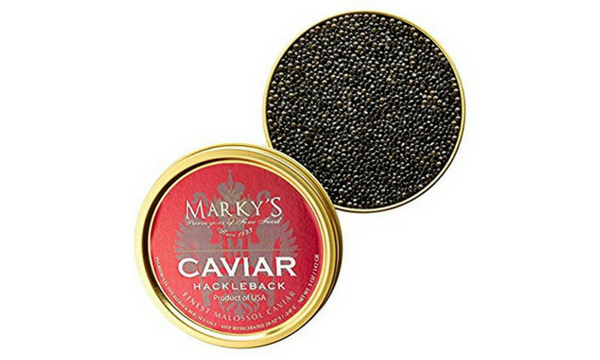
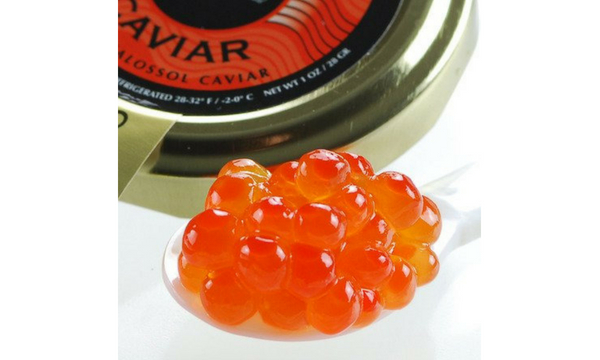











![Best Crochet Hooks for Beginners and Pros [2020 Update] best crochet books](https://www.awebtoknow.com/wp-content/uploads/2018/01/best-crochet-books-100x70.jpg)
![Best Slow Cookers for Delicious Well Cooked Meals [2020 Update] best slow cookers](https://www.awebtoknow.com/wp-content/uploads/2017/08/best-slow-cookers-100x70.jpg)

